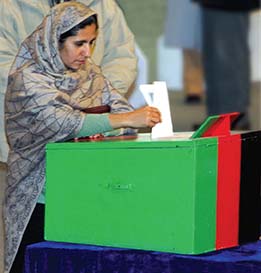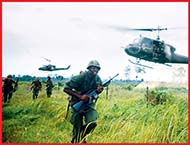American Issues  Connector: America and the World
Connector: America and the World

Since 2001, Afghanistan has labored to remake its government into a stable democracy.
TRACK THE ISSUE
![]() Checkpoint What is America’s role in the world?
Checkpoint What is America’s role in the world?
At times throughout its history, the United States has tried to avoid getting involved in other countries’ affairs. At other times, it has played an active part in world affairs. Today, America is deeply involved around the world. But what should its role be? Use the timeline below to explore this enduring issue.
-
1796 Washington’s Farewell Address
President Washington warns against foreign alliances.
-
1823 Monroe Doctrine
President Monroe tells Europe to stay out of the Americas.
-
1898 Spanish-American War
The United States defeats Spain and expands overseas.
-
1940s–1980s Cold War
The United States tries to stop the spread of communism around the world.
-
2000s War on Terrorism
The United States works with other countries to fight global terrorism.

American soldiers fought in Vietnam during the Cold War.
DEBATE THE ISSUE
Intervention and Democracy In 2001, the United States invaded Afghanistan. It toppled the Taliban government and ended its support for terrorism. Since then, the United States has helped to rebuild Afghanistan. Can intervention bring progress to a country?
“The United States and Afghanistan have made great progress…. Together we have … worked to ensure that Afghanistan will never again be a safe haven for terrorists. The United States has supported the Afghan people as they have established a moderate, representative government.”
—Joint Declaration of the United States-Afghanistan Strategic Partnership
“The [George W.] Bush administration has consistently labeled the invasion of [Afghanistan] a success. But reports from humanitarian organizations, United Nations officials and Afghanis themselves paint a very different picture—warlords dominate much of the country, the Taliban is still a force in many parts, and the illegal drug trade is flourishing.”
—Seymour Hersh, journalist for The New Yorker
 TRANSFER Activities
TRANSFER Activities
- Compare What does the first quotation say about the results of intervention? What does the second quotation say?
- Analyze What kinds of challenges might leaders from both countries face as they work to create a functioning democratic government?
- Transfer Use the following Web site to see a video, try a WebQuest, and write in your journal. Web Code: neh-8902




